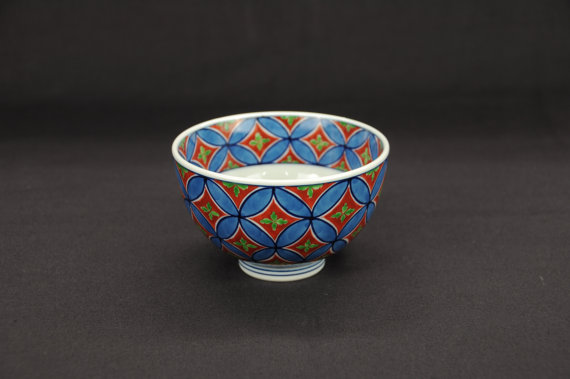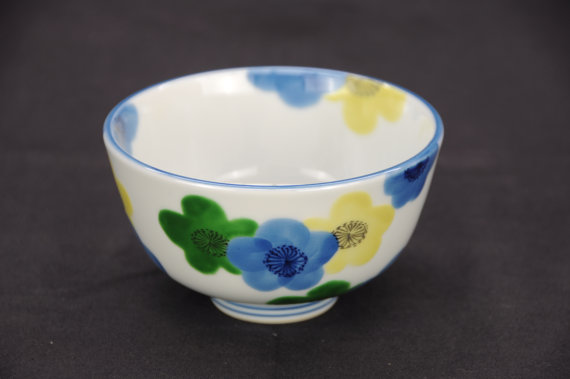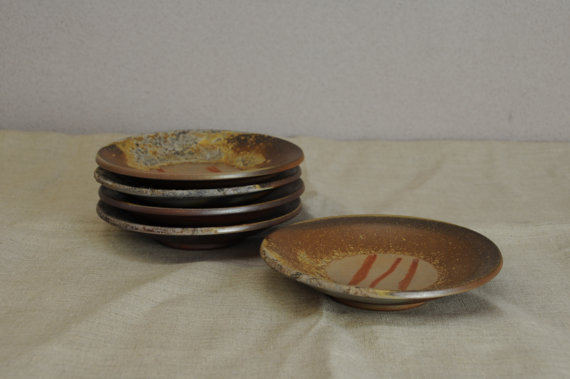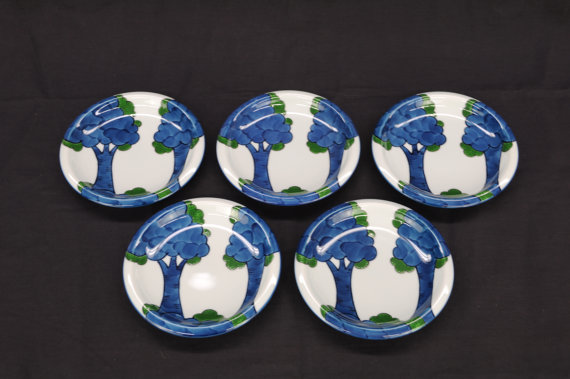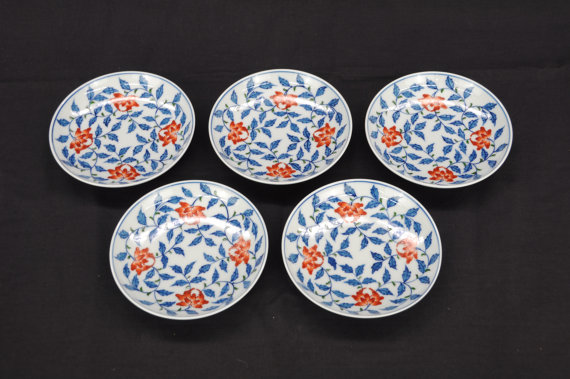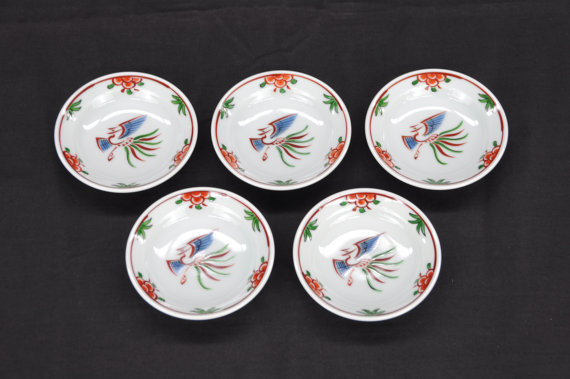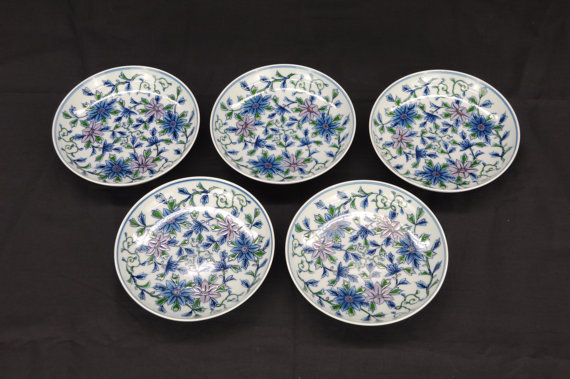Japanese Potteries(Explanations to the technical terms of ceramics No.4)
There are various technical words on potteries. Here are some of those, for which I’d like to give you some remarks.
MESHIWAN and GOHANJAWAN (Bowl for Serving Rice)
When reading Chawan (in Japanese characters) literally, it comes to be a cup for tea. Yes, it means a tea cup. But in Japan the word is used as a synonym of a bowl used for serving rice. Why is that?The habit to drink tea came down from China to Japan around 1200 years ago. Chawan has been something to be used for drinking tea since those time. Habits of drinking tea became widespread in the Japanese upper classes in the 16th century which was about 700 years ago. As having beautiful Chawan(s) brought from China where was the original place of tea, the value of them jumped up to be as much as a single province was worth. In the present value, it may be approximately equivalent to a few trillion yen or 10 space shuttles.
Instead of such premium Chawan that anybody could hardly own, they then brought cups having been used to drink Makgeolli (Korean alcoholic beverage) in the Korean Peninsula. By the way, in the Korean Peninsula, the bowls for soup was the biggest, getting smaller in the order of bowls or cups for rice, for Makgeolli, and then for tea. It appears that the size of their cups for Makgeolli was just nice for Japanese to use as Chawan. However, such cup also went grown in popularity and the value had been raised to be as much as a few hundred billion yen in the blink of an eye!
After that, Japanese started to produce Chawan by themselves but still just for drinking tea, while the common people used wooden bowls when eating rice. It means that Chawan and Meshiwan (bowl for serving rice) were different each other. There is a kind of tableware called Oryoki set which priests of the Zen sect of Buddhism use. It is a nest of 5 different-sized bowls for soup and side dishes, which are wooden bowls. Ceramic Meshiwan also came to be made that were for soup or alcohol as well as for rice or ochazuke (boiled rice with tea). However, what made Meshiwan spread over explosively was “Kurawanka-wan E Kurawanka-wan(s) were bowls made of ceramic that widely caught on in about the 19th century. They were almost the same as Chawan in their shape and those made of ceramic had originally been luxury goods, however, some thick and simply-patterned ceramic bowls gradually came into market at very cheap price being sold together with alcohol or rice. The name came from so called “Kurawanka Boat Eon which merchants spoke loud as “Meshi Kurawankka? Sake Kurawanka? Eto sell foods and beverages going around rivers. “Kurawanka? Emeans “don’t you eat? Ebr> Such meals sold with ceramic bowls on boats were so cheap that people threw the bowls away into the river after eating. It was supposed to be as cheap as something like paper cups or PET bottles if it were now.
In this way, such low-priced ceramic bowls had been distributed all over Japan, and people started to call them Ochawan. Don’t you think it would be precious if present that they were all hand-made with hand-written patterns in spite of such low price?
You have had your own Meshiwan from your childhood to hold it in your hand, bring it to your mouth, and love it every day. Although you might buy new one in growing or by your age, it has to be important for you being with you all the time. Your Meshiwan must be filled with delights that you can always take your favorite one in your hand and use.
You can purchase the products. Click an item to view its detail at Marketplace.
TORIZARA (Small Plates)
Torizara is a small plate to be used when taking some foods served on a platter. If you have a meal with many people, the plates are needed as much as the number of people there. Throughout the times when the 3 to 4 generations resided together in a house and it was natural to have a 10-tableware-set, or the other times later when a family unit got smaller having a 5-tableware-set or when one by one owns each favorite ones instead of having a set of tableware in a family, potteries have changed the form in the transition of time. However, even though the form has been changed, what is little changed is the shape of potteries.Especially, the shape of Torizara that is 18 centimeters or so is one of the typical example which has been used since long ago. For Japanese people that have common practice to own each individual tableware, each of Meshiwan or Chawan has been for personal use, but apart from that, a few types of common plates are prepared and used when sharing foods from a big platter.
There is a type of foods called Obansai in Kyoto which is in another word Osozai (side dishes). If you go to a Koryoriya (a type of eating house), you will see various home-cooking foods displayed on big platters and bowls arranged on the counter. It is good fun to look around and choose from cooked vegetables, pickled dishes, fish boiled in soy sauce, and so on, and the missis will get you the food you've ordered taking some on a Torizara.
In a hot pot restaurant, you and your friends sit down surrounding a hot pot and enjoy the dining sharing the food from the pot and adding another food into the pot, with a Torizara in your hand.
In an opportunity like a new-year day or lantern festival where relatives gather up, or on a special occasion like a birthday party, you may prepare a lot of Torizara(s). The table that many plates are arranged on looks delightful and make you happy.
Torizara may be an item which is just simple but make people happy for a long time with its easy-to-use shape for any foods and unwearying design. It would be good to have several types of Torizara sets to fit in any scenes.
You can purchase the products. Click an item to view its detail at Marketplace.

